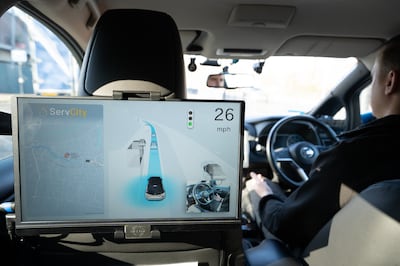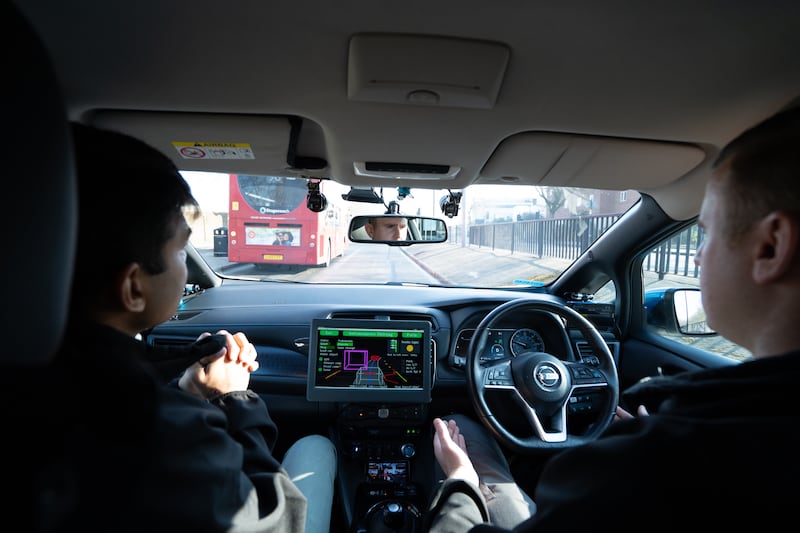A major self-driving car experiment in London, in which driverless cars have covered thousands of kilometres, is nearing a finish line that could provide revolutionary routes for the future of driving.
Engineers hope that in the next decade, millions of drivers will move away from the steering wheel and pass control to the electronic brain.
And they see a future that could mean traffic lights dying a natural death as self-driving cars take control.
Already they have learnt major lessons from the London experiment, including how less likely it is for British drivers to obey road rules.
Two Nissan self-driving electric cars have completed hundreds of laps around a 4km route featuring busy A roads in Woolwich, south-east London, for two years. They have totalled more than 2,500km.
It is part of the ServCity project to identify and tackle barriers to autonomous vehicles in cities.

Thomas Tompkin, an engineer at Smart Mobility Living Lab, said he hopes that in the next decade, the UK “moves on a lot” towards “completely driverless cars” in public use.
Robert Bateman, who manages ServCity for Nissan, said there have been significant differences in London’s trials compared with similar tests in the US and Japan.
“With London, there’s more pedestrian interactions and crossings. In Japan, everybody follows the rules. Not so in the UK,” he said.
“Quite frankly, if you can get it right here, you can then deliver an autonomous vehicle anywhere in the world.”
Mr Bateman insisted the cars are safer than those with a human in control.

“The car is looking 360 degrees around it. That’s the autonomous vehicle system’s only job,” he said.
“It’s not eating a sandwich. It’s not texting. It’s not thinking what it’s going to be doing at work. It is 100 per cent safer.”
The experiment is understood to be the UK’s first trial of driverless technology that involves the use of both roadside infrastructure and the vehicles’ own systems.
About 270 cameras installed on the route by SMLL send information to the Nissan Leaf cars about potential issues ahead, allowing them to change lanes before encountering obstructions, creating a smoother flow of traffic.
Mr Tompkin, head of network, infrastructure and operations at SMLL, estimated that high-specification roadside systems cost “around one million pounds per kilometre” but added that a wider roll-out involving more basic technology could be done for a fraction of the price.
“If we think about maybe 20 or 30 years' time, can you start to then think about the infrastructure outside?” he asked.
“Can you start to remove some of that infrastructure such as traffic signals? Obviously, there’s a lot of work to be done before that ever takes place. But that’s where you can start to see a seismic shift in the way our roads are laid out.”
In the test driving, ServCity’s cars have a qualified driver behind the wheel who can take control when needed.
A driver intervened on at least two occasions during media demonstrations earlier this week to avoid a possible collision with a bus and to miss a chunk of road surface dislodged from a pothole.
ServCity is a £10.7 million consortium project involving Nissan, Hitachi, Connected Places Catapult, the University of Nottingham, TRL (formerly Transport Research Laboratory) and SBD Automotive.







